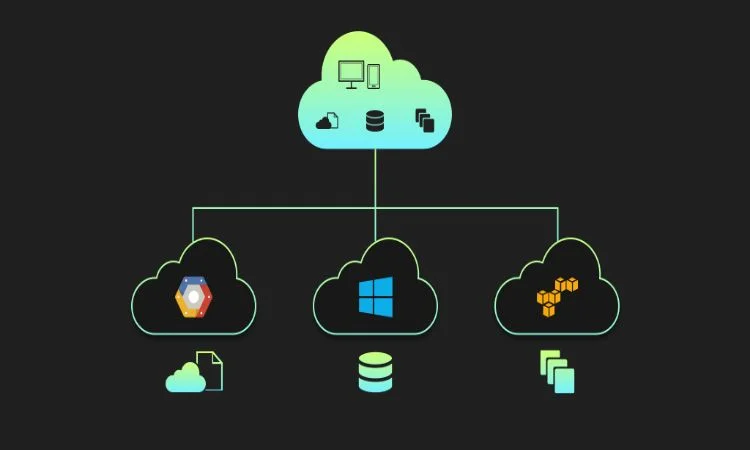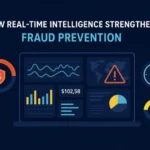Data Acquisition: A Cornerstone of Digital Economy Achievement

Data Acquisition is essential to digital marketing success. It supports innovation, competitive advantage, enhanced customer satisfaction, and well-informed decision-making for enterprises.
Businesses that see data as a resource and make an effort to develop the infrastructure, personnel, and procedures needed to enable data paper will profit from the digital revolution.
Understanding Data Acquisition
Data collection is the process of obtaining raw data from various sources and converting it into a format that can be processed and analyzed. This can include anything from customer marketing and social media interactions to sensor data from the Internet of Things devices and satellite pictures.
All following data-driven operations are built upon the foundation of data collecting, which is the first stage in the data lifecycle.
Key aspects of data acquisition include:
- Sensors and Instruments: Is able to record physical phenomena, including motion, pressure, and temperature. These sensors transform analog signals from the actual world into digital data that computers can process.
- Signal Conditioning: Before being fit for analysis, sensor raw data frequently needs to be cleaned up or conditioned.
- Data Conversion: When converting analog signals into digital representation, analog-to-digital converters, or ADCs, are frequently utilized.
- Data Logging: After the data is digital, it is frequently recorded or logged throughout time. This data will be analyzed or consulted in the future.
- Data Transmission: It could be necessary to transfer data over Bluetooth, USB, or wireless technologies.
- Data Analysis: Following data collection, relevant information and insights can be extracted through analysis, visualization, and interpretation of the data.
Data acquisition systems are used in various fields, including scientific research, industrial automation, environmental monitoring, medical diagnostics, quality control, and more.
In order to make wise judgments, streamline workflows, and increase general productivity, these systems are essential to businesses. Furthermore, an in-depth discussion of business-related matters will be covered in the next part.
Why is Data Acquisition Important?
Understanding why data acquisition is crucial unveils a transformative realm for businesses, enabling them to tailor products, optimize operational processes, improve offerings, and even innovate new business models by leveraging valuable insights derived from customer data.
Understand Customer Needs
Acquiring data involves collecting and analyzing many types of information, including client data. Businesses that gather information about consumer behavior, tastes, and interactions can gain valuable insights into the requirements and wishes of their clientele.
One key aspect of data acquisition is obtaining clients’ contact information. By collecting email addresses, phone numbers, and other relevant details through a comprehensive data acquisition system, businesses can establish direct lines of communication with their customers. This enables personalized engagement strategies, tailored marketing efforts, and opportunities for feedback and product testing.
Businesses are able to design products and services that better cater to the demands of their clients by using the information that has been gathered. Businesses must optimize unneeded items to prevent wasting money, time, and effort because customers only need what they want.
The path to customer happiness is through data acquisition to understand client wants. Additionally, this demonstrates that a business respects and is prepared to accommodate the unique tastes of its clients.
Enterprises may create more focused and efficient marketing efforts with the use of data-driven insights derived from customer data. Businesses may increase customer engagement and conversion by segmenting their client base based on their interests and behavior, which allows them to give relevant information and offers.
Letting customers test new products is another way to keep them as customers. You want to know if consumers are interested in buying a new product before you put it on the market.
This may provide you with insights about how consumers use your products and services, enabling you to improve their overall experience, usability, and functionality.
Improve Products and Services
Companies can use user interactions, reviews, surveys, and other data collection methods to get input from customers and improve their products. This raises the likelihood that new releases will succeed by ensuring that they meet the demands and expectations of consumers.
It also assists companies in avoiding financial waste. They can concentrate on improvements that have a quantifiable impact on customer satisfaction and business outcomes rather than investing in modifications that might not produce significant advantages.
By examining consumer behavior and usage patterns, data collecting enables firms to identify weak points in their goods or services. For instance, data analysis can identify the causes behind customers’ habit of leaving an online shopping cart empty before making a purchase, allowing firms to change the checkout process or fix problems with delivery, price, or usability.
Customer preferences and markets are subject to quick changes. Businesses can remain aware of these developments by using data acquisition to track changes and patterns in consumer behavior. To stay competitive and relevant in the market, products, and services can be modified with the use of this information.
Businesses that leverage data to iteratively enhance their goods and services have a competitive advantage. They can outperform rivals and draw in and keep a devoted customer base by responding to consumer wants and market dynamics more skillfully.
Optimize Operational Processes
Businesses may lose more time and money as a result of an inefficient and complex procedure. The collection of data will yield insightful information about the performance of many business components, including workflow bottlenecks, resource utilization, and production efficiency. Based on factual data, we may then make informed decisions on process optimization.
Businesses can find areas where processes can be optimized and inefficiencies by regularly monitoring and analyzing operational data. For instance, data can show that some production process steps are taking longer than necessary, which would cause delays and higher expenses.
Because data acquisition captures real-world data points, it can aid in the creation of intricate process maps or flowcharts. These maps offer a visual depiction of how processes operate, which facilitates the identification of areas in need of automation or improvement.
Allocating resources can be influenced by information on the use of resources, such as labor, materials, and equipment. Companies may make sure that resources are used effectively, cutting down on waste and running expenses.
Develop New Business Models
Businesses can better understand their target markets and customer segments by data acquisition. Through the process of gathering and evaluating consumer behavior, preference, and trend data, businesses can recognize gaps in the market and new opportunities.
New business models, usually customer-centric models, can be created from there. Businesses can create models that emphasize customer happiness and loyalty by collecting data on consumer demands and pain spots. This could result in subscription-based, recurring income models.
Businesses might find previously untapped or unidentified prospective revenue streams by using data analysis. Then afterward, they find fresh approaches to making money off of their goods, services, or data assets.
Companies that use data well can develop and modify their business plans to generate steady revenue streams and maintain their competitiveness.
Explore the benefits of implementing robust Knowledge Management Software and how it can revolutionize your organization’s information management strategies.
Leverage Data Acquisition for Digital Economy Success
In summary, data acquisition is a critical component of success in the digital economy, allowing businesses to prosper in the face of quickening technical change and shifting consumer demands.
Businesses may reap a multitude of benefits by treating data acquisition as a strategic asset, including better decision-making based on data, improved customer experiences, more innovation, and optimized operating procedures.
Businesses can obtain important insights into client wants, enhance their offerings, maximize operational efficiency, and even create new business models that are specifically designed to satisfy changing market demands utilizing thorough data gathering, analysis, and interpretation.
Ultimately, companies may maintain their competitiveness, successfully innovate, and promote sustainable growth in the digital age by adopting data collecting as a core component of operations.

Why Smart Startups Choose Custom AI Business Solutions Today

How to Optimize Business Operations with Vending Machines in Australia

How a portable office for sale can streamline on-site operations and boost productivity

Onsite Tire Change in Ottawa : Safe Fast & Professional Tire Services

Accelerating drug discovery through the DEL-ML-CS approach

Top Reasons Law Firms Are Replacing Call Centers With TeleWizard

5 Common Multi-Cloud Networking Mistakes & Fixes

Eye-Catching Composition Techniques Using Action Camera Wide-Angle Lenses








